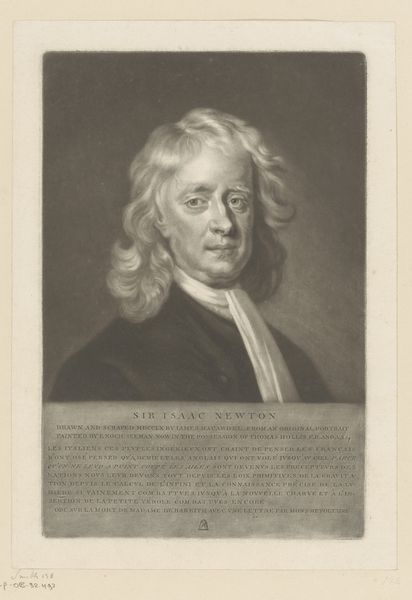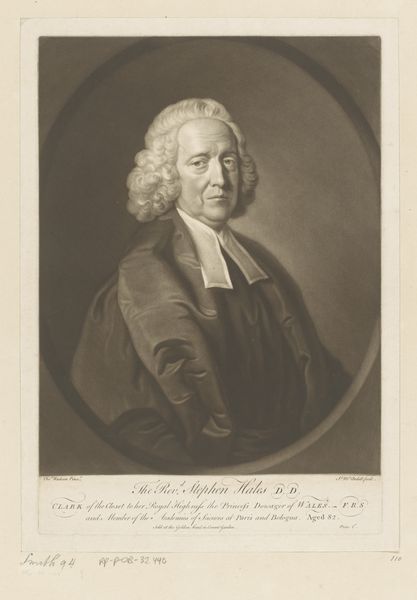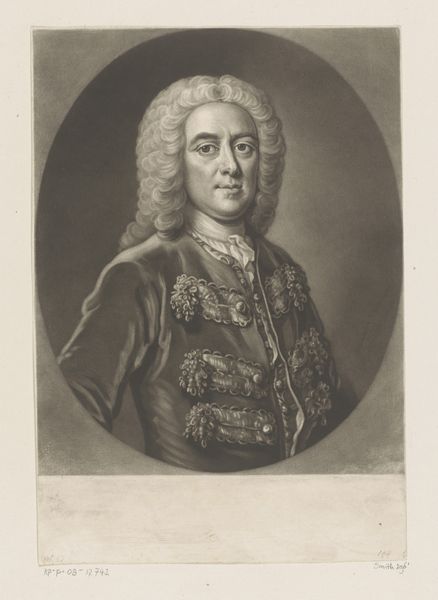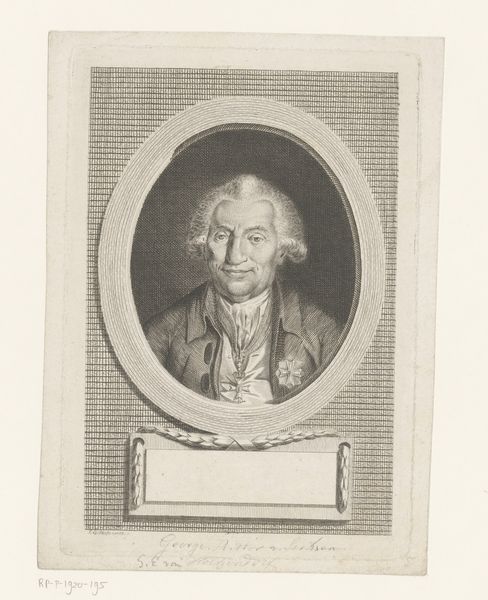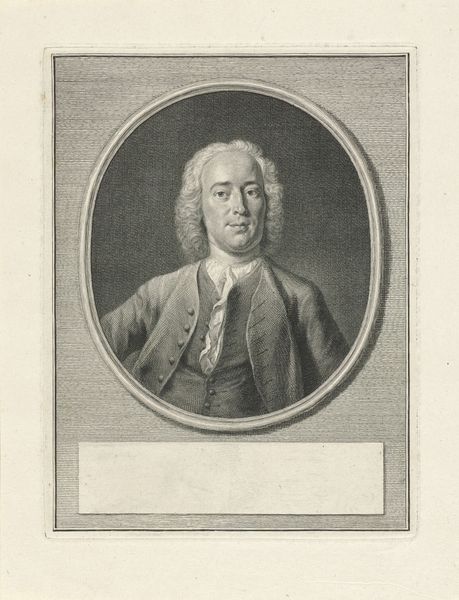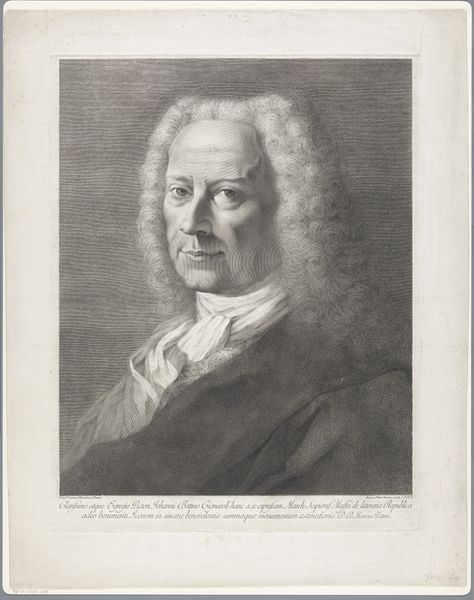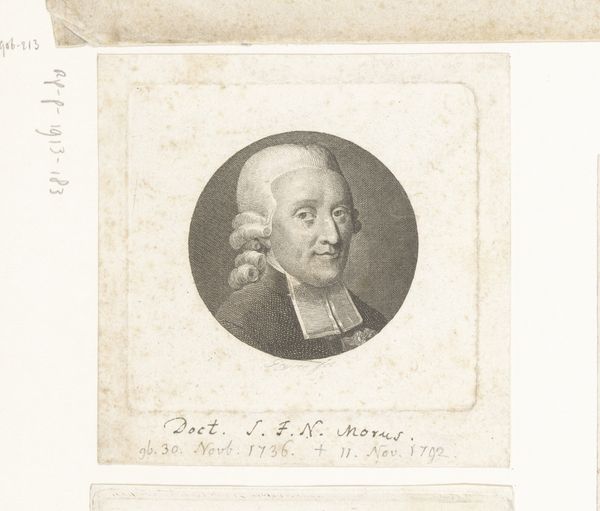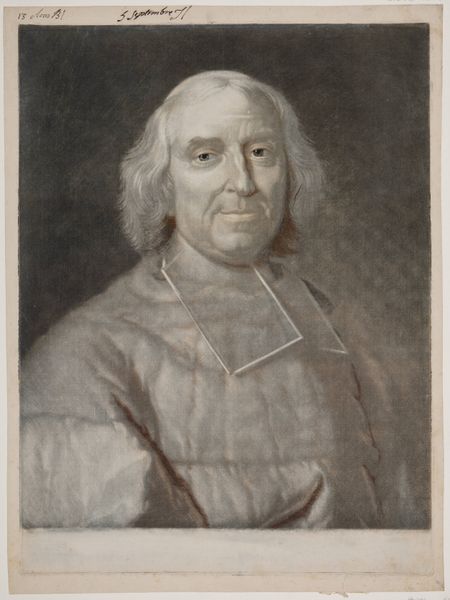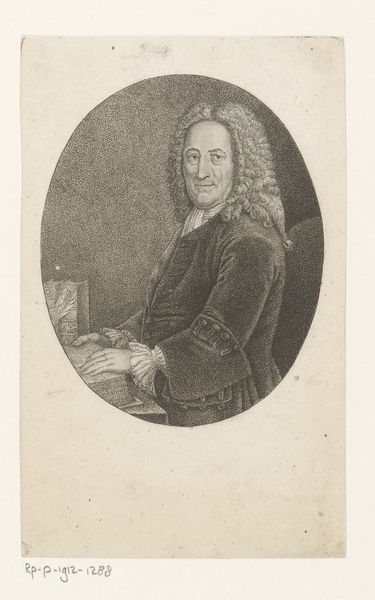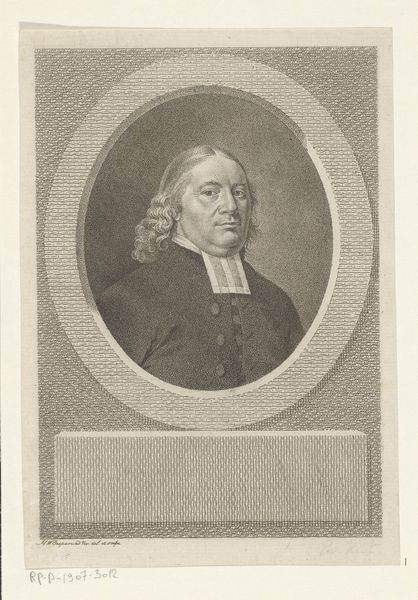
engraving
#
portrait
#
baroque
#
history-painting
#
academic-art
#
engraving
Dimensions: height 266 mm, width 180 mm
Copyright: Rijks Museum: Open Domain
Curator: The lighting is so dramatic! There's a real weight to the darkness surrounding him. Editor: Yes, there is quite a stark effect there. We're looking at a mezzotint engraving from 1760 by James McArdell. It is titled, "Portret van Isaac Newton" and is held here at the Rijksmuseum. It’s an interesting piece to consider within the context of the burgeoning scientific revolution and the popularization of knowledge. Curator: You can really see the mezzotint at work in the texture of the background. The artist coaxed those tonal variations from the plate—it gives it an almost velvety appearance, a very material and textural quality. It’s really beautiful, technically speaking. Editor: Indeed. This was a time when the visual representation of figures like Newton was becoming increasingly important in shaping public perception of scientific authority. Consider the engraving’s distribution; it wasn’t just for private collectors. Prints like these helped to establish Newton as a figure of intellectual power within a wider cultural sphere. Curator: It is compelling to think about the labor involved here. All of those minute gradations of tone were created through a highly skilled, laborious process. Each print pulled carries with it that physical act of making and disseminating the image. This engraving exists, in part, as a consumer good that demonstrates technical mastery. Editor: Absolutely, and what's striking is the way that this portrait elevates Newton to almost a saintly status. The baroque style adds to that sense of reverence. We're seeing not just a man, but an icon manufactured through this very accessible medium. Its purpose speaks volumes about how society viewed intellect and discovery. Curator: It is the accessibility that makes it so significant from a materials perspective. An engraving allowed this image to circulate widely, transforming how Newton’s image and ideas permeated culture. It wasn’t just about showing *him*, but it also affected the transmission of scientific ideas through a wider audience. Editor: Ultimately, this portrait speaks to the powerful intersection of art, science, and society in the 18th century. It reveals the importance of visual imagery in constructing and reinforcing cultural narratives about knowledge and power. Curator: A very fascinating portrait to reflect on. Editor: Indeed!
Comments
No comments
Be the first to comment and join the conversation on the ultimate creative platform.
